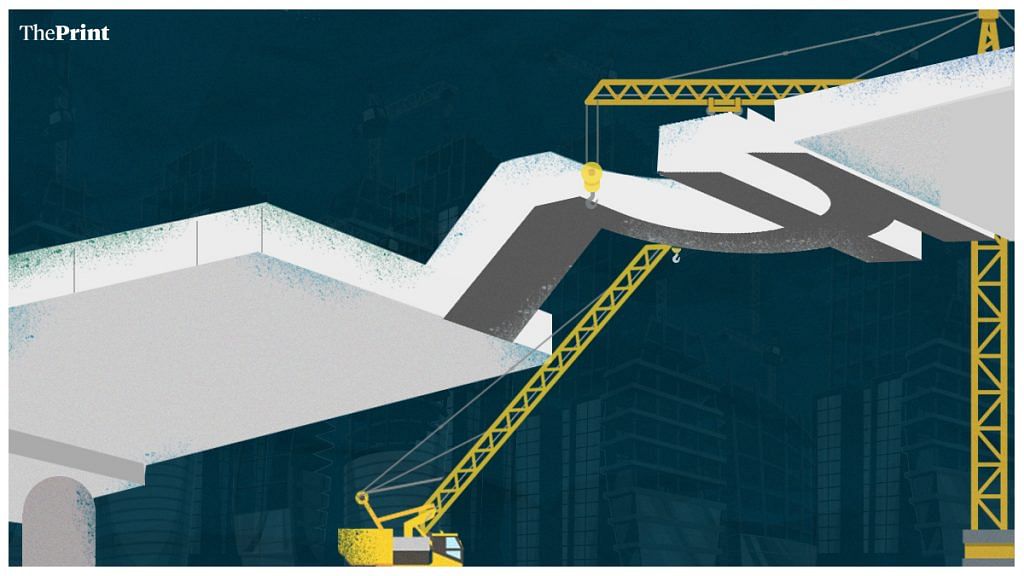India is on a building spree: Highways, expressways, high-speed freight corridors, bridges over the sea, coastal freeways, metro lines in every large city, bullet trains, “semi-high speed” inter-city journeys from reimagined railway stations, new deep-sea ports, airports… it is a long and impressive list. If things had gone according to plan and schedule, the map of India would have been transformed by the time the 75th anniversary of Independence rolled around. Now, it will take a while longer.
Still, after three false starts, the trans-harbour link connecting Mumbai to its twin city on the mainland is finally getting built. The world’s tallest rail bridge, across the Chenab, is nearing completion. All-weather tunnels have been drilled under Himalayan passes. Bridges have been thrown across the Brahmaputra. High-speed freight trains 1.5 km long, with containers double-stacked, have been tried out on short stretches of the new freight corridors, at speeds faster than some express passenger trains. To these, one must add new-style urban centres like Dholera taking shape, however slowly, on the Mumbai-Delhi Industrial Corridor, even as Gujarat’s Gift City’s changing skyline and growing list of client companies suggest that an unlikely idea is finally bearing fruit.
Other transformations have been designed coterminously to accompany this change of the physical landscape. After bank accounts, cooking gas, toilets and health insurance, there will be tap water and electricity. There is also the intended shift from coal to renewables (vast expanses in the Rajasthan desert covered with solar panels), and to a new breed of electrical vehicles. Thus a new idea of India, if such it can be called, will be concretised to confirm to citizens, even those disappointed that farm incomes will not have doubled (as promised) or manufacturing increased its share of GDP sufficiently to provide millions of jobs, that there is indeed something to celebrate in the platinum jubilee year.
Meanwhile, the ever-more ambitious announcements of new projects that stretch to 2030 and beyond, and the investment sums involved, take one’s breath away. Bullet trains are now planned on seven routes, not just Mumbai-Ahmedabad. Signal-free expressways with eight lanes or more will crunch travel times over 18,000 km, and four-lane highways will connect most district headquarter towns, besides there being fast inter-city trains in every direction. The investment? Rs 2 trillion for this, Rs 20 trillion for that, Rs 50 trillion for a third project, and Rs 70 trillion for a fourth. A Rs 200-trillion economy talks only in trillions!
Also Read: This is a new Modi. He’s betting on growth and taking big risks on the economy
You could say it all started with the Vajpayee government’s Golden Quadrilateral highway programme, followed by the Manmohan Singh government planning a green energy push, blueprinting the freight corridors and even conceptualising the first bullet train service. But it is unquestionably the Modi government that has taken the powerful combination of infrastructure investment and welfarism to their current levels of ambition.
Yet a familiar India surfaces at every step. Centre-state squabbles, environmentalists’ concerns, hassles over land acquisition, and plain old project delays have affected most projects. For Mumbai alone, this includes the new airport and the main north-south metro line as well as the coastal road, the terminus for the bullet train from Ahmedabad and the trans-harbour link. Meanwhile, plans for connecting every gram panchayat with a broadband link are less than halfway there.
Like the Navy’s ship-building, the natural time-line for almost any major project progressing from idea to project completion seems to be 20 years, instead of half that. That might explain the prime minister’s frustration with the bureaucracy, and his ministerial colleagues’ reputation for venting anger at officials. But overweening ambition may also be the problem, like the green energy drive that is likely to fall short of sharply escalated targets.
Finally, and inevitably, where is the money? A faltering economy has deprived the government of revenues and the private sector of surpluses. Special purpose companies have been set up, but the National Highways Authority of India is neck deep in debt while saddled with endless incomplete projects. The railways have tasted red ink, and the fiscal deficit is hitting the bond market. Asset monetisation is the new mantra, but the proof of that pudding will be in the selling.
By Special Arrangement with Business Standard
Also Read: Why Narendra Modi’s India is ‘partly free’, and where it is headed
